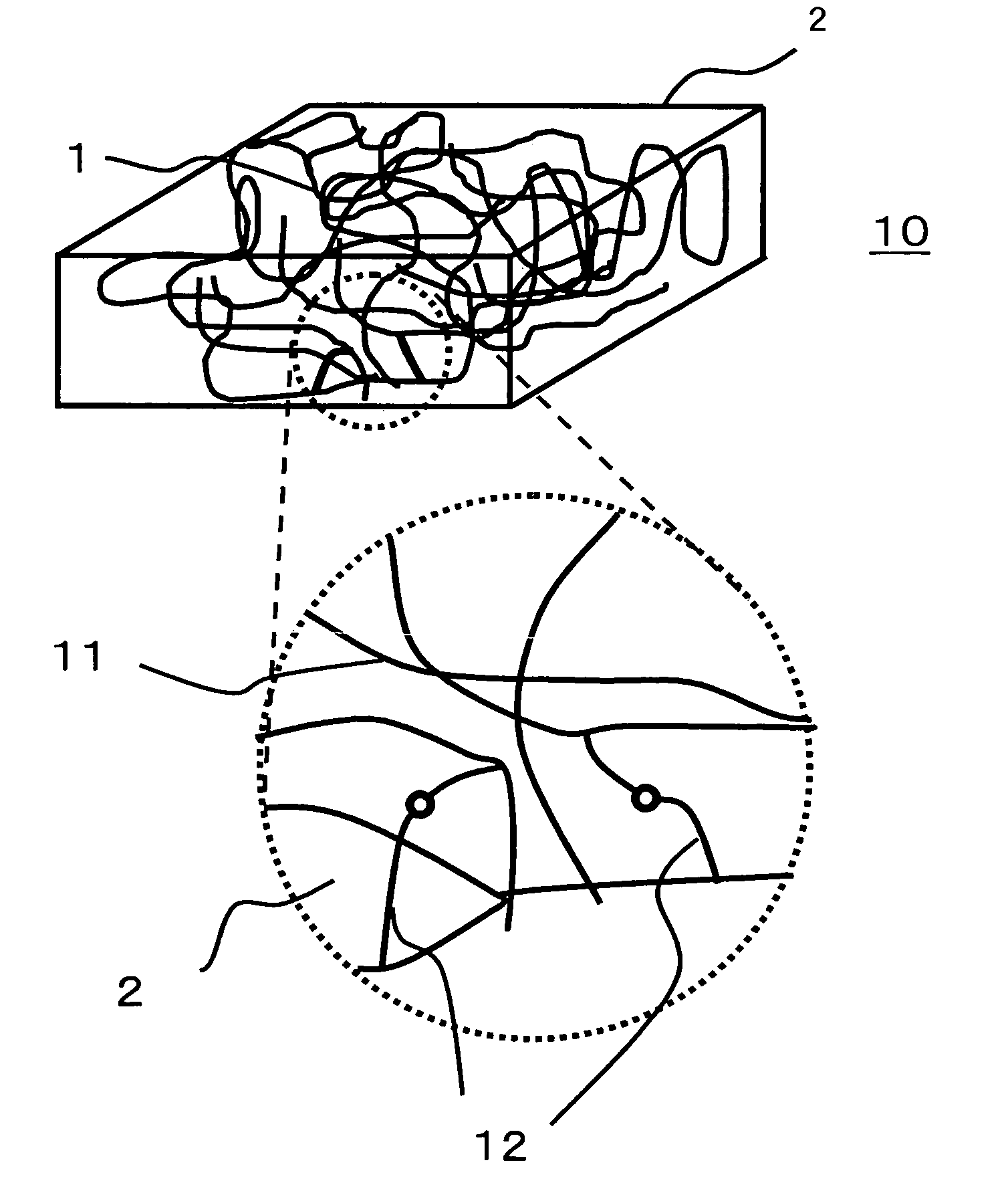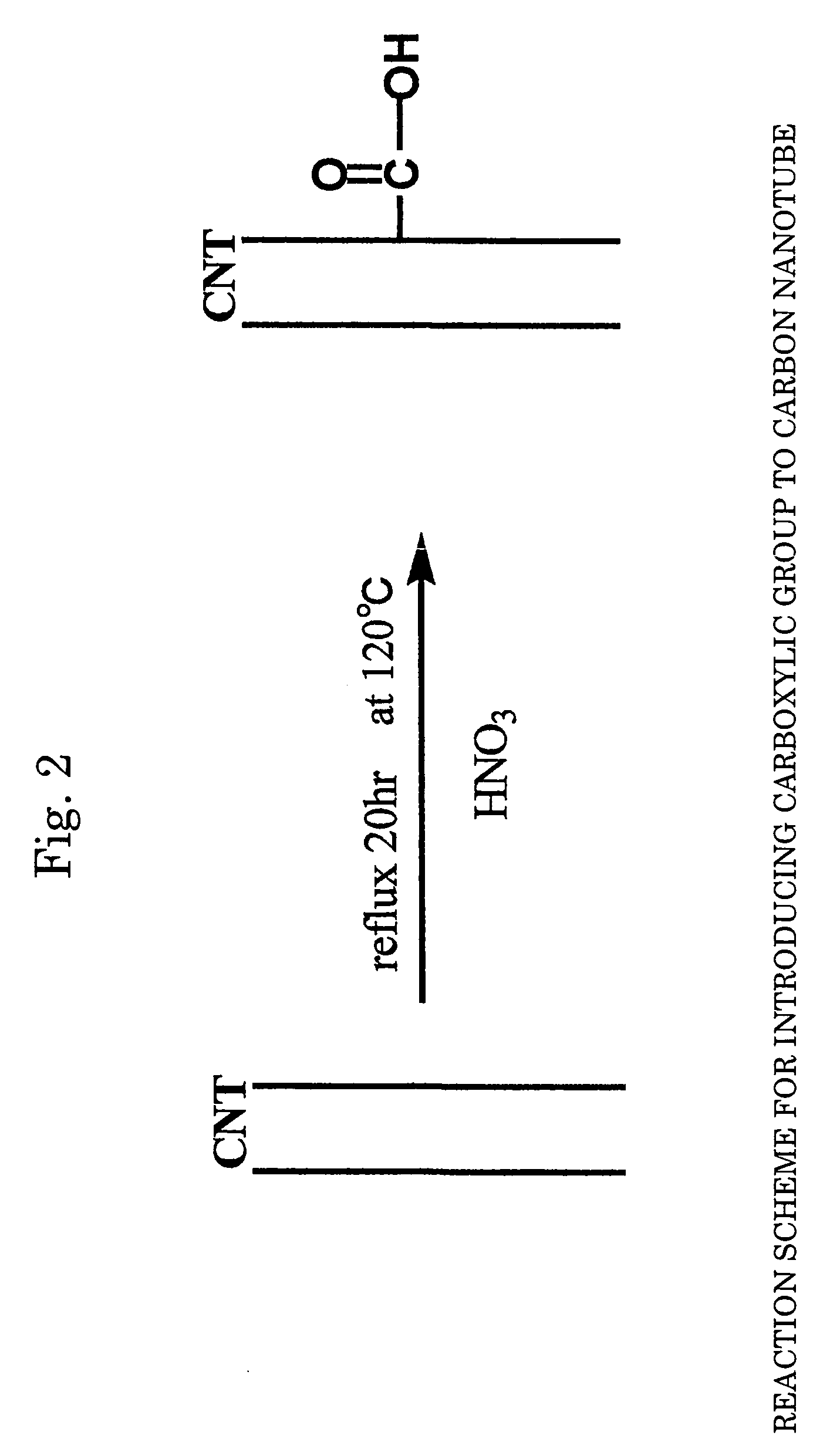Composite and method of manufacturing the same
a carbon nanotube and composite technology, applied in the field of composites of carbon nanotubes, can solve the problems of deterioration of moldability, significant deterioration of physical characteristics such as impact strength, and difficulty in uniform dispersion of nanotubes, and achieve satisfactory mechanical characteristics, high electrical conductivity, and the effect of hardly deteriorating characteristics of carbon nanotubes
- Summary
- Abstract
- Description
- Claims
- Application Information
AI Technical Summary
Benefits of technology
Problems solved by technology
Method used
Image
Examples
example 1
Nanotube-polymer Composite Employing Glycerin Cross-linked Multi-wall Carbon Nanotube Structure
(A) Supplying Step
[0169] (Addition Step)
[0170] 30 mg of multi-wall carbon nanotube powder (purity: 90%, average diameter: 30 nm, average length: 3 μm, available from Science Laboratories, Inc.) was added to 20 ml of concentrated nitric acid (60 mass % aqueous solution, available from Kanto Kagaku) for reflux at 120° C. for 20 hours, to synthesize carbon nanotube carboxylic acid. A reaction scheme of the above is shown in FIG. 2. In FIG. 2, a carbon nanotube (CNT) portion is represented by two parallel lines (the same applies for other figures relating to reaction schemes).
[0171] The temperature of the solution was returned to room temperature, and the solution was centrifuged at 5,000 rpm for 15 minutes to separate a supernatant liquid from a precipitate. The recovered precipitate was dispersed in 10 ml of pure water, and the dispersion liquid was centrifuged again at 5,000 rpm for 15...
example 2
[0182] The carbon nanotube structure obtained in the same manner as in Example 1 was impregnated with an epoxy resin (Araldite, available from Ciba Specialty Chemicals, Switzerland) by dropping and curing about 0.1 ml of the epoxy resin, thereby providing a nanotube-epoxy resin composite.
[0183] Carbon nanotubes are known to burn off when a large current is passed therethrough in an atmosphere containing oxygen, and there is an upper limit to a current that can be passed through the carbon nanotubes, that is, to a current density in an atmosphere containing oxygen. However, the composite of the polymer and the nanotube structure of the present invention can shield the nanotube from oxygen and can raise the upper limit of the current density, thereby providing a nanotube-polymer composite capable of passing through a larger current. Further, bending strength of each nanotube-polymer composite was enhanced compared to that of the resin alone, preventing breaking by bending.
PUM
| Property | Measurement | Unit |
|---|---|---|
| diameter | aaaaa | aaaaa |
| Young's moduli | aaaaa | aaaaa |
| diameter | aaaaa | aaaaa |
Abstract
Description
Claims
Application Information
 Login to View More
Login to View More - R&D
- Intellectual Property
- Life Sciences
- Materials
- Tech Scout
- Unparalleled Data Quality
- Higher Quality Content
- 60% Fewer Hallucinations
Browse by: Latest US Patents, China's latest patents, Technical Efficacy Thesaurus, Application Domain, Technology Topic, Popular Technical Reports.
© 2025 PatSnap. All rights reserved.Legal|Privacy policy|Modern Slavery Act Transparency Statement|Sitemap|About US| Contact US: help@patsnap.com



